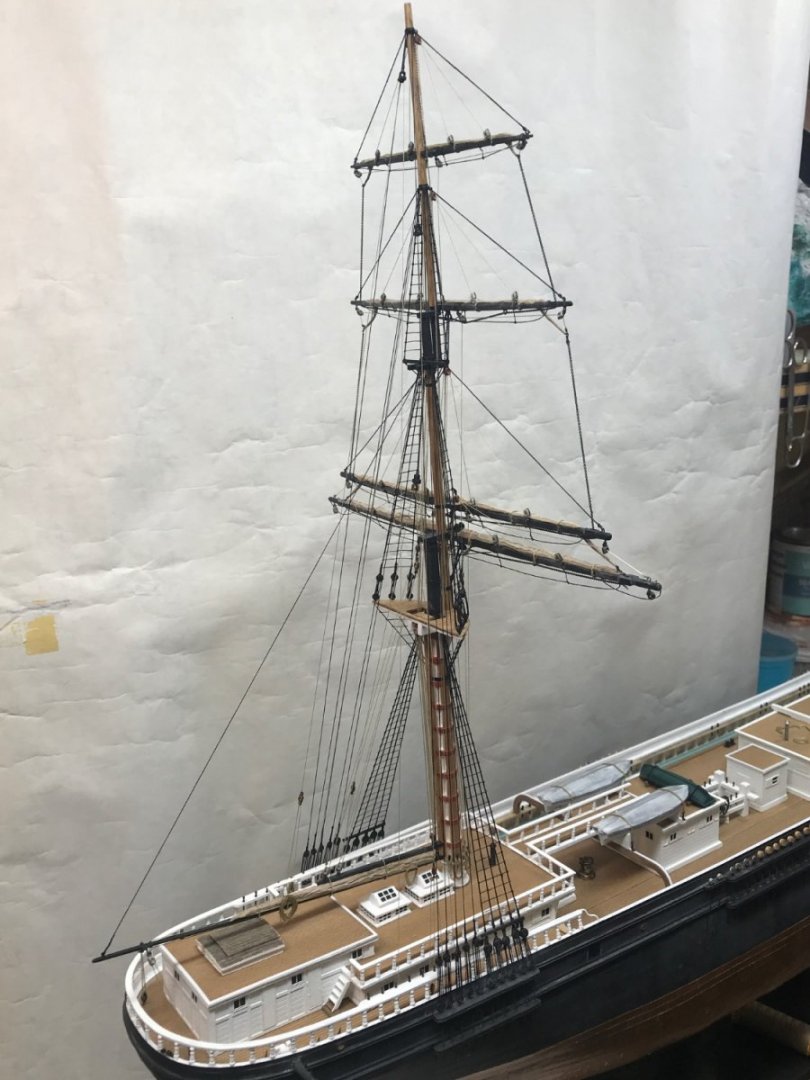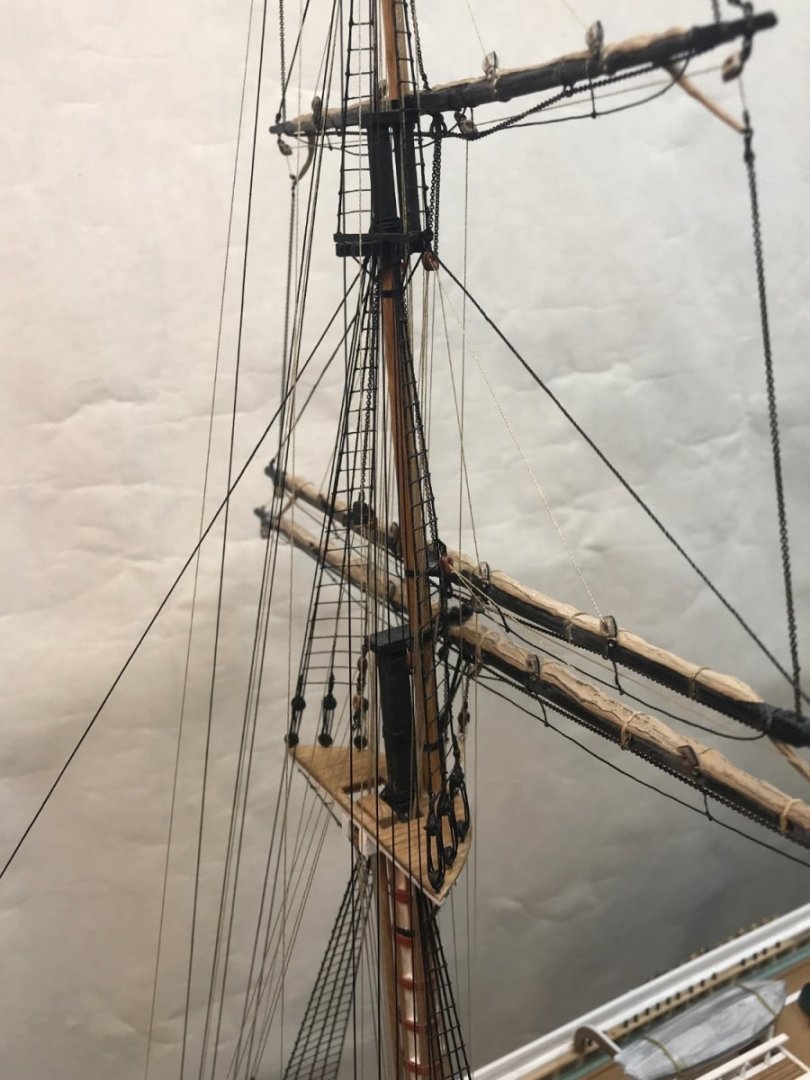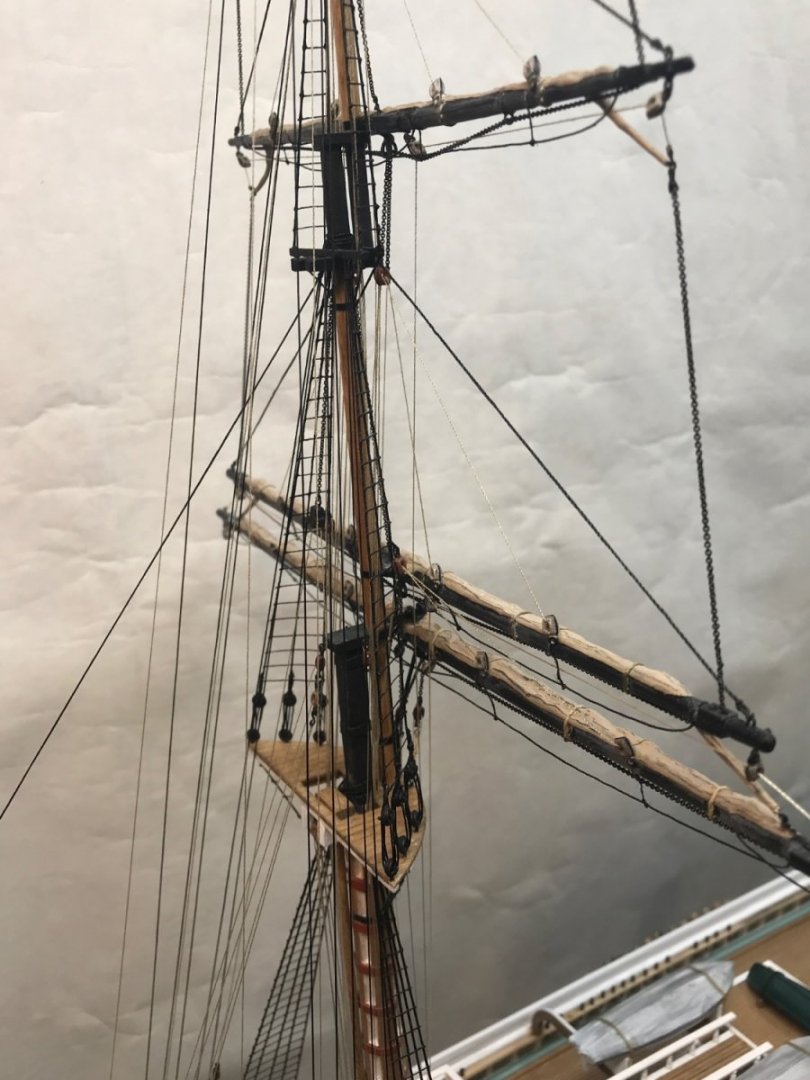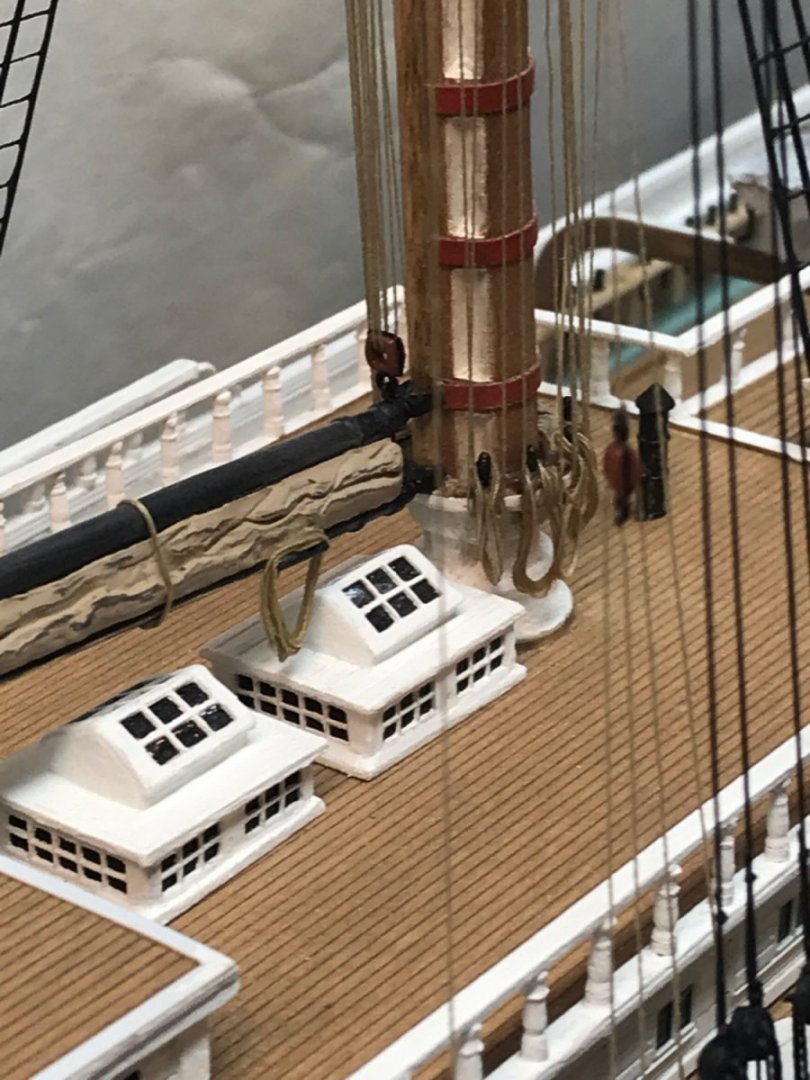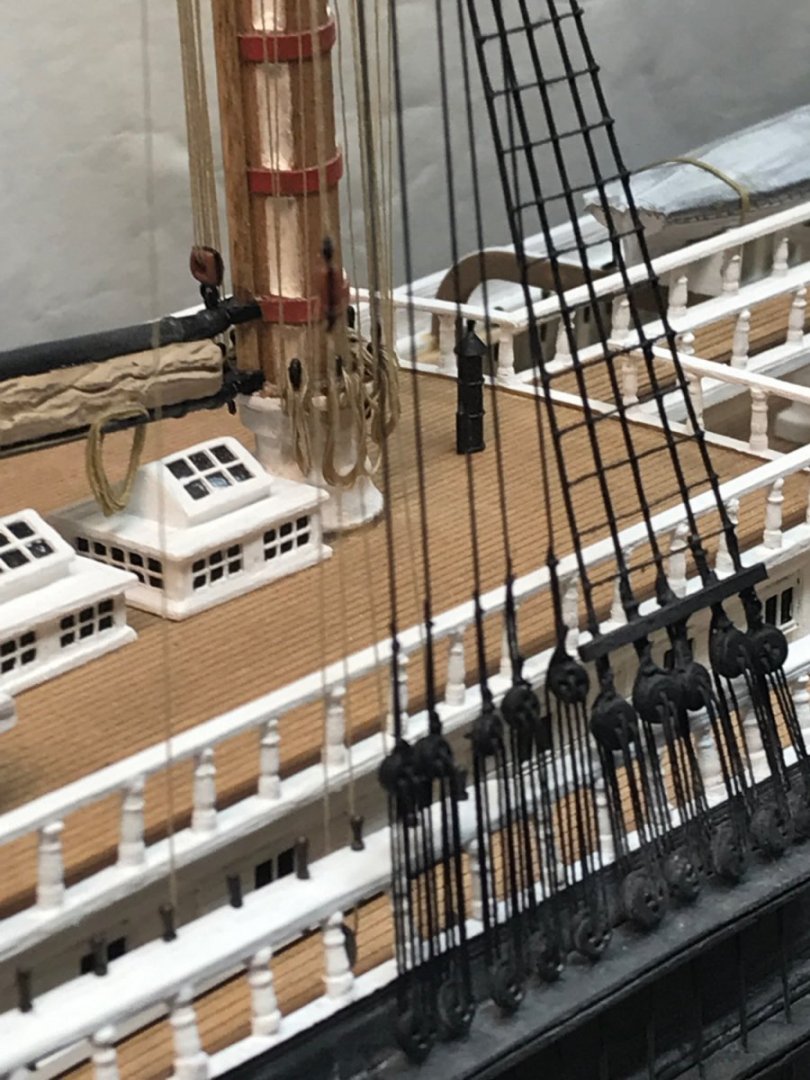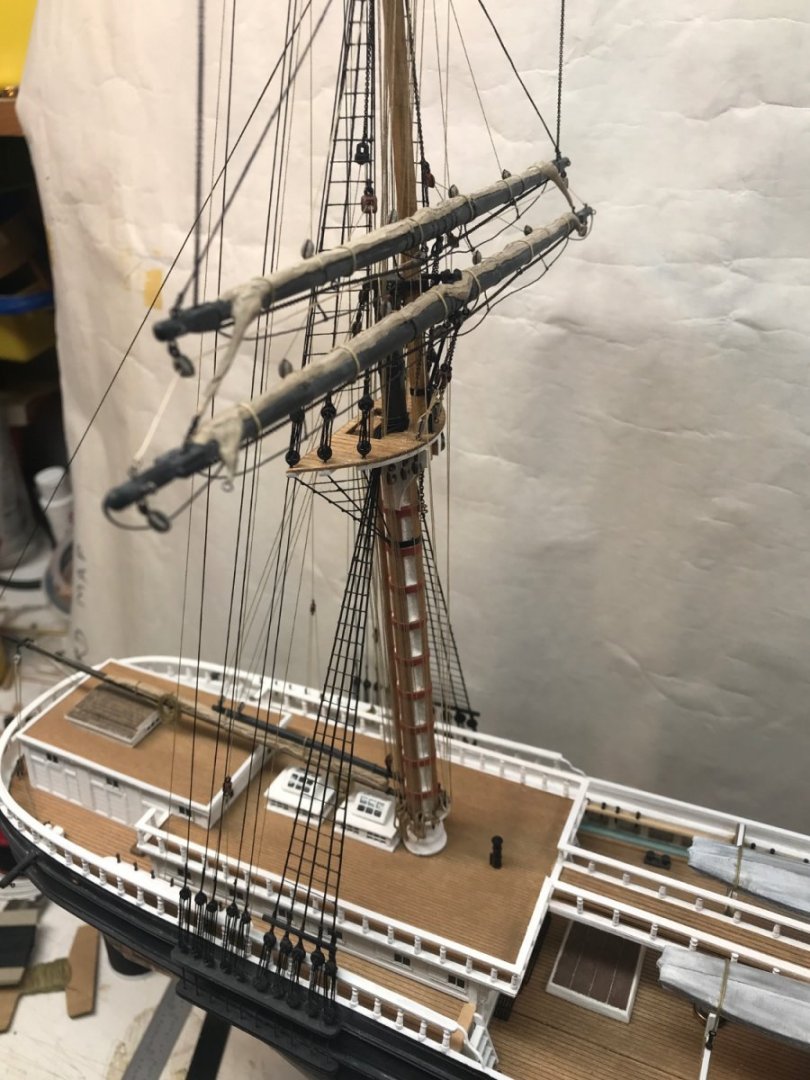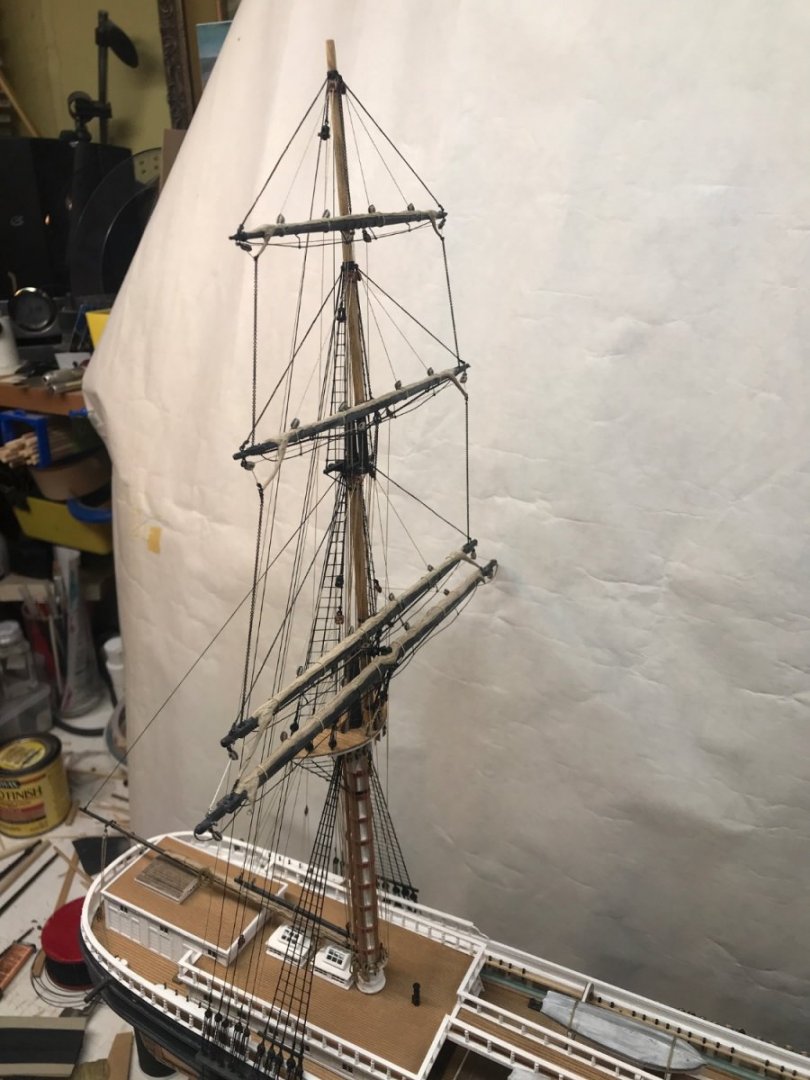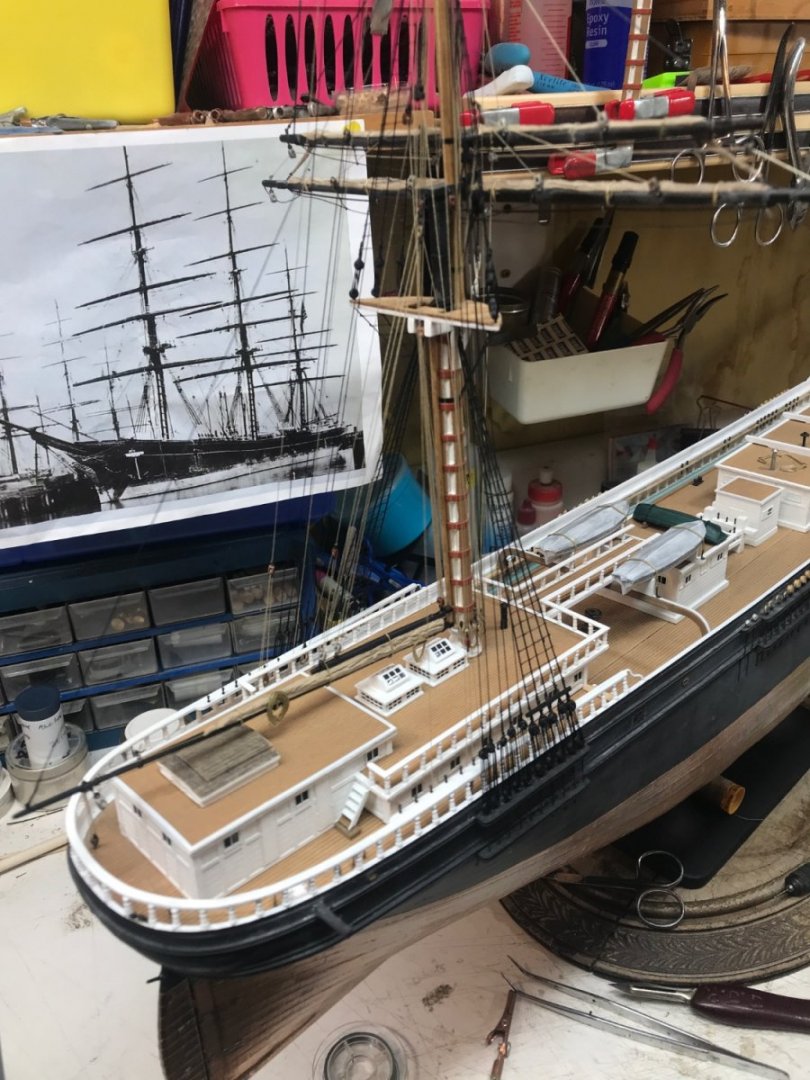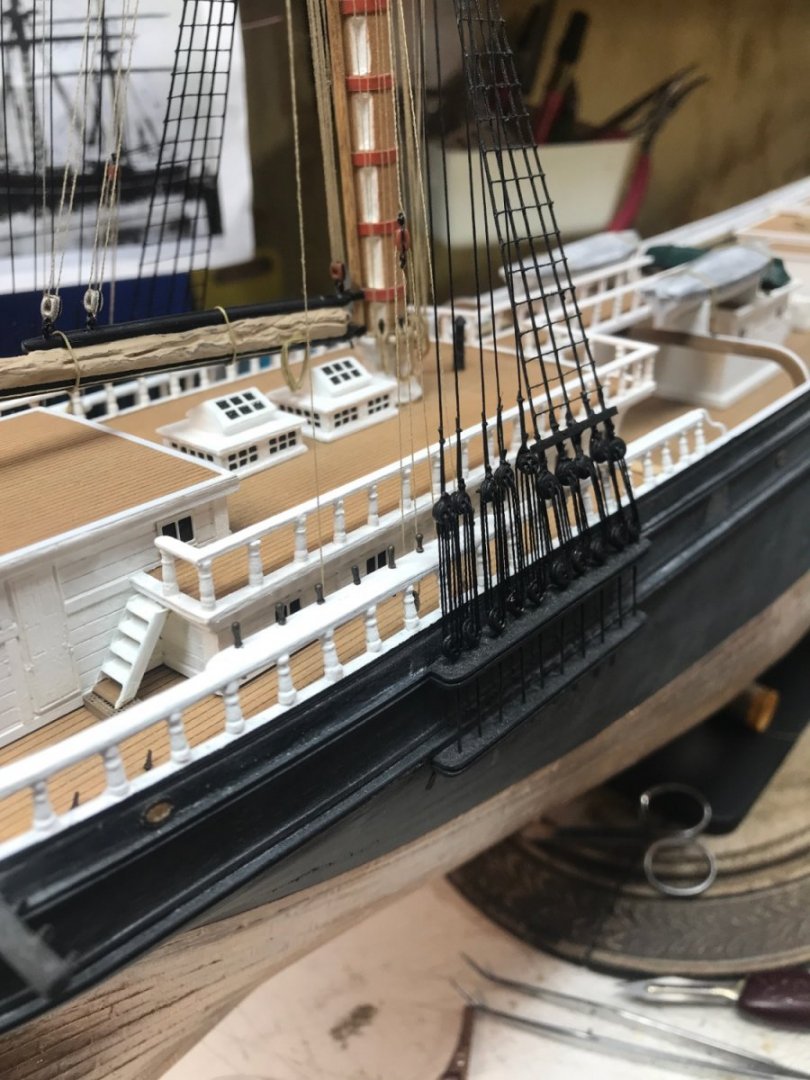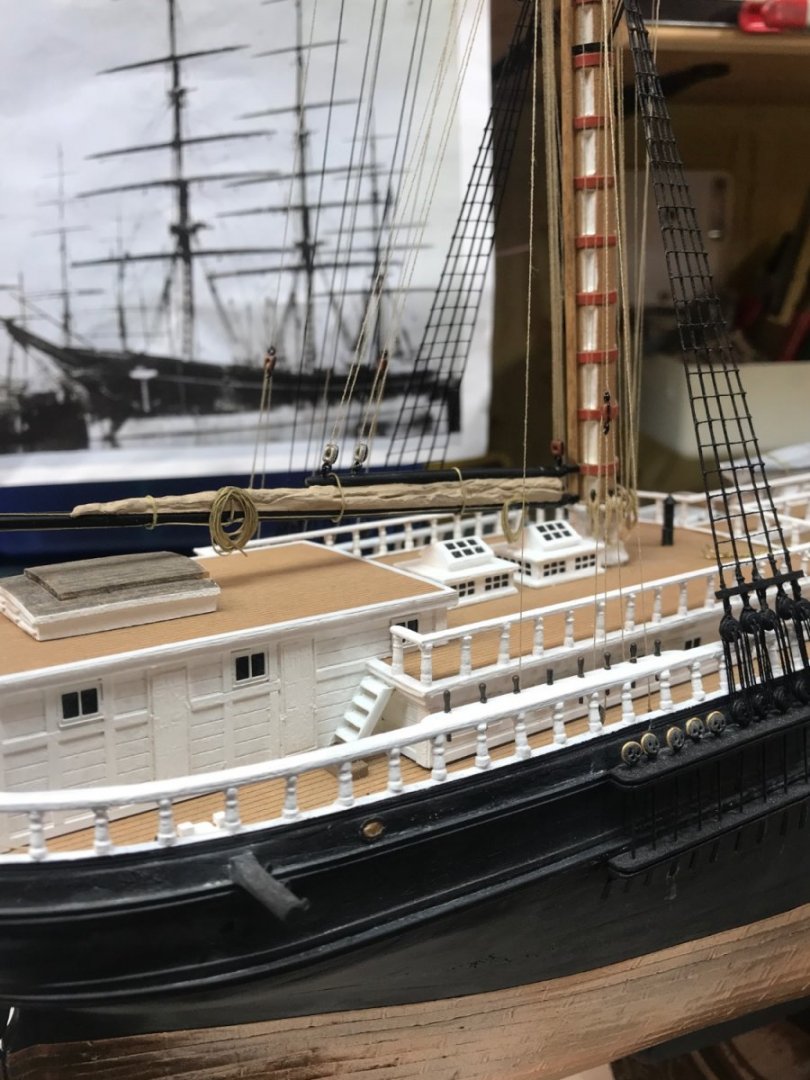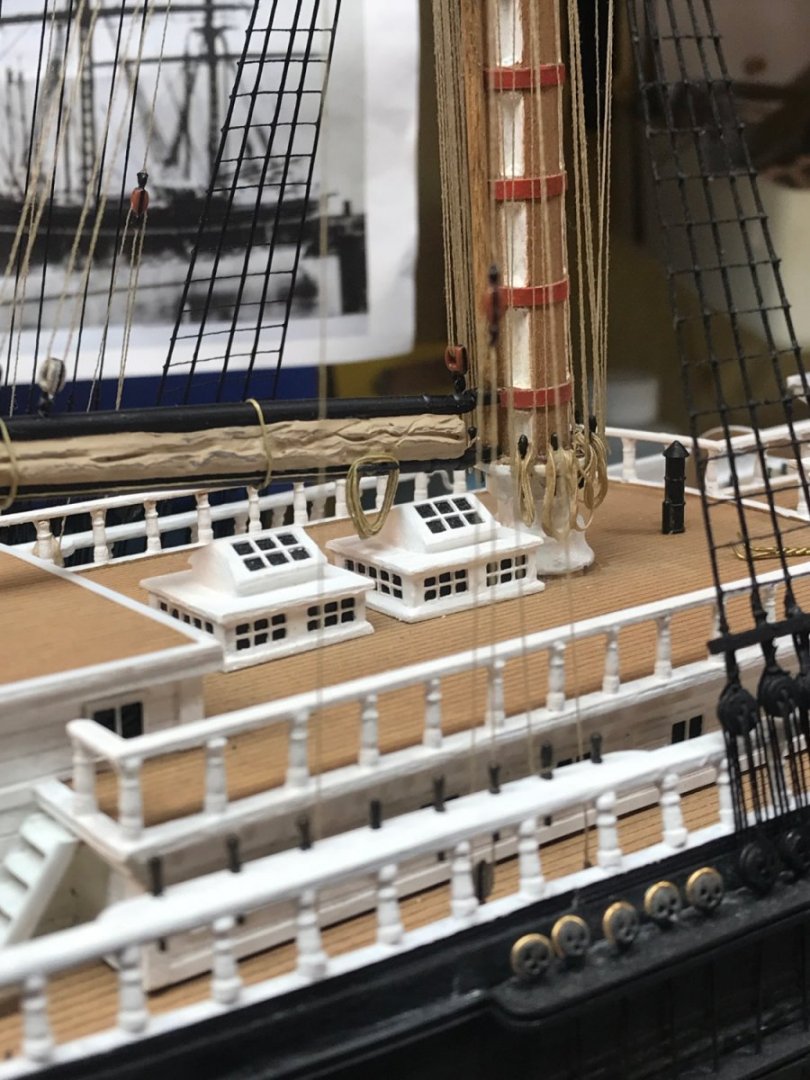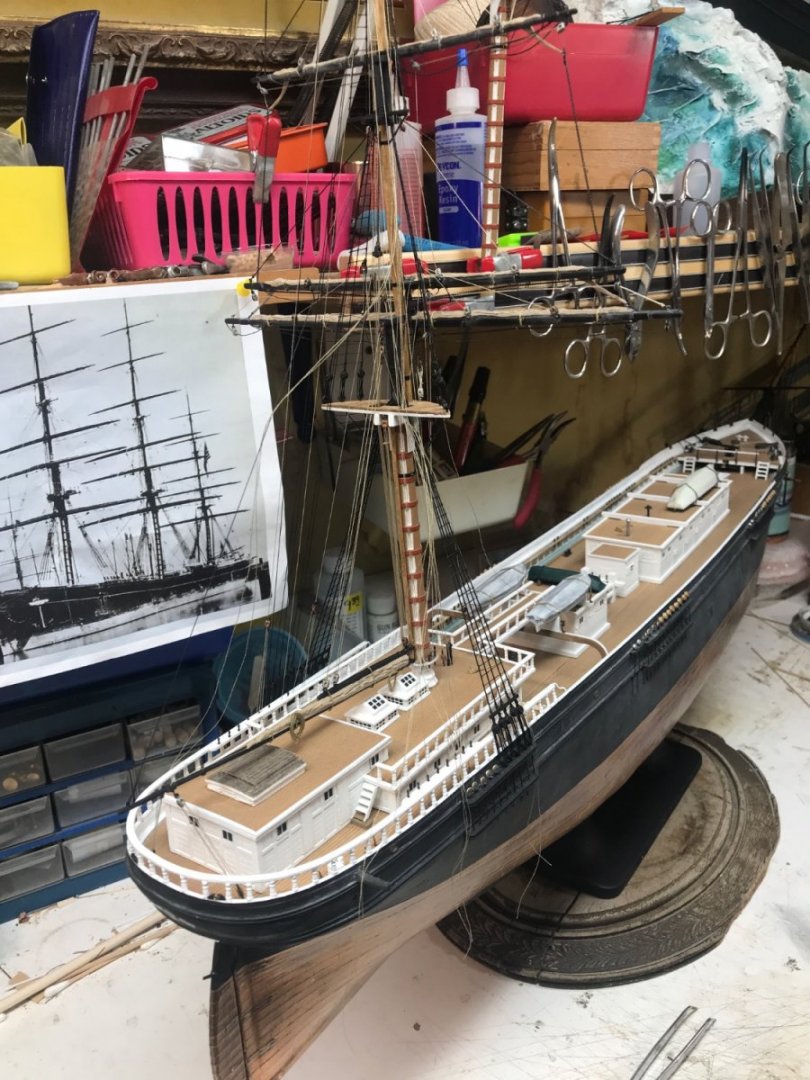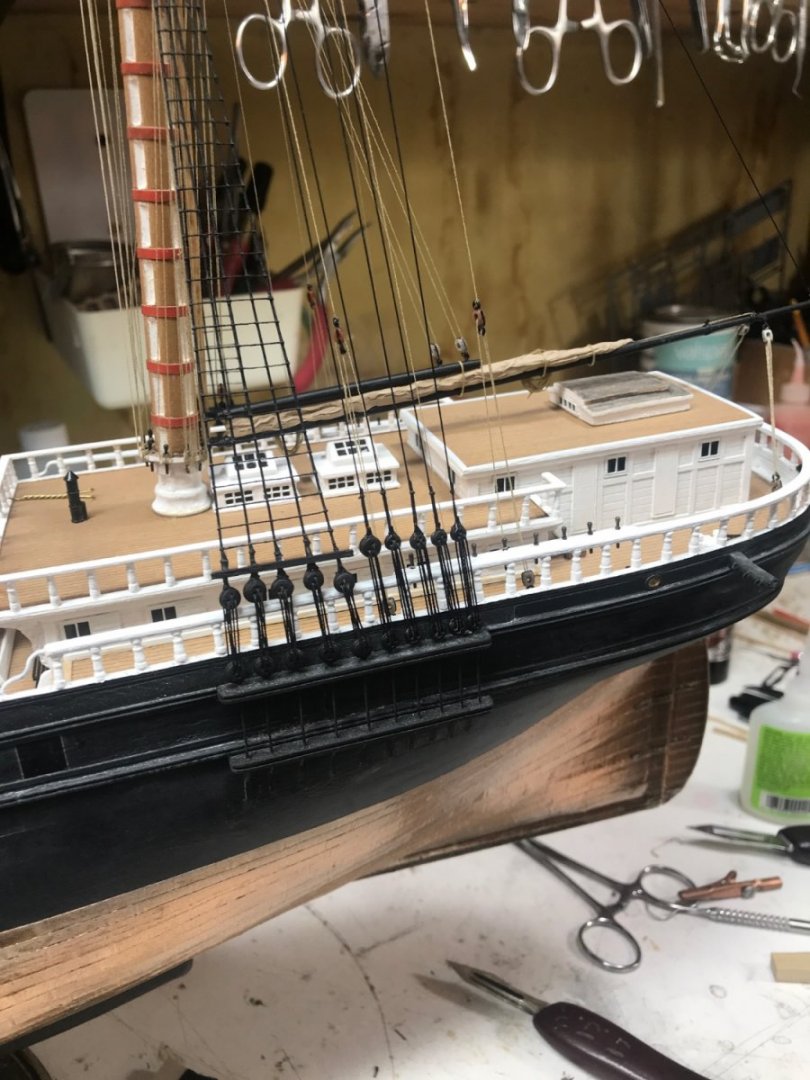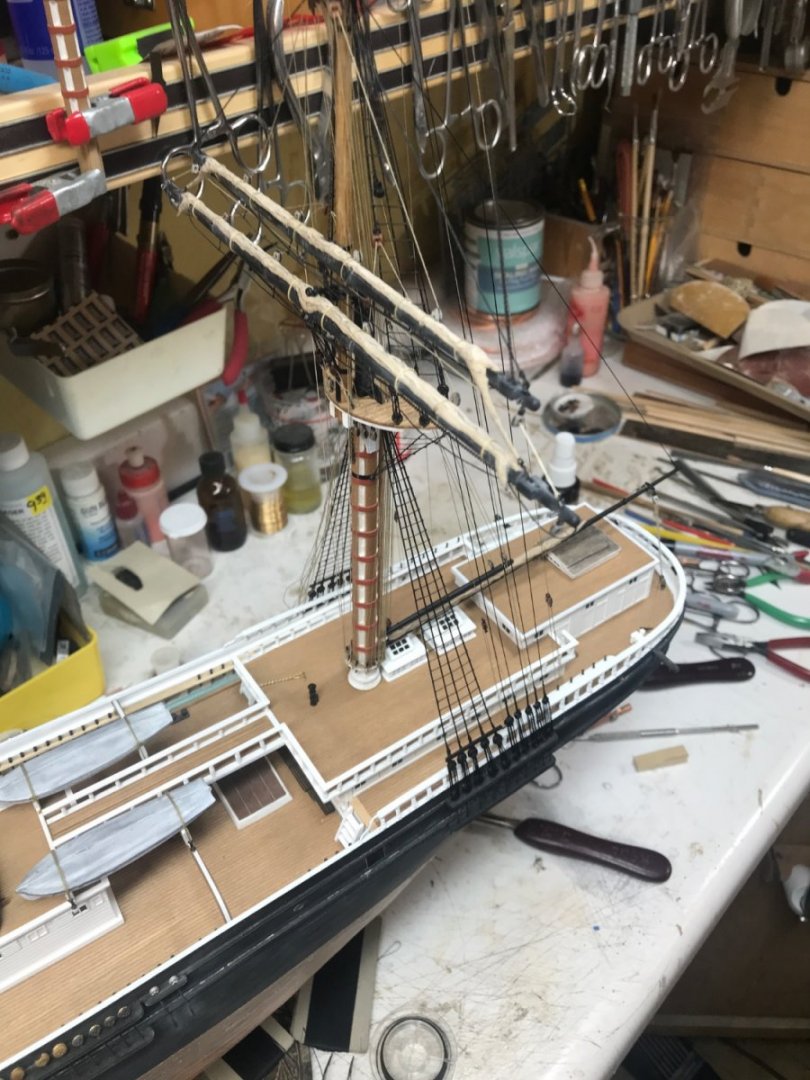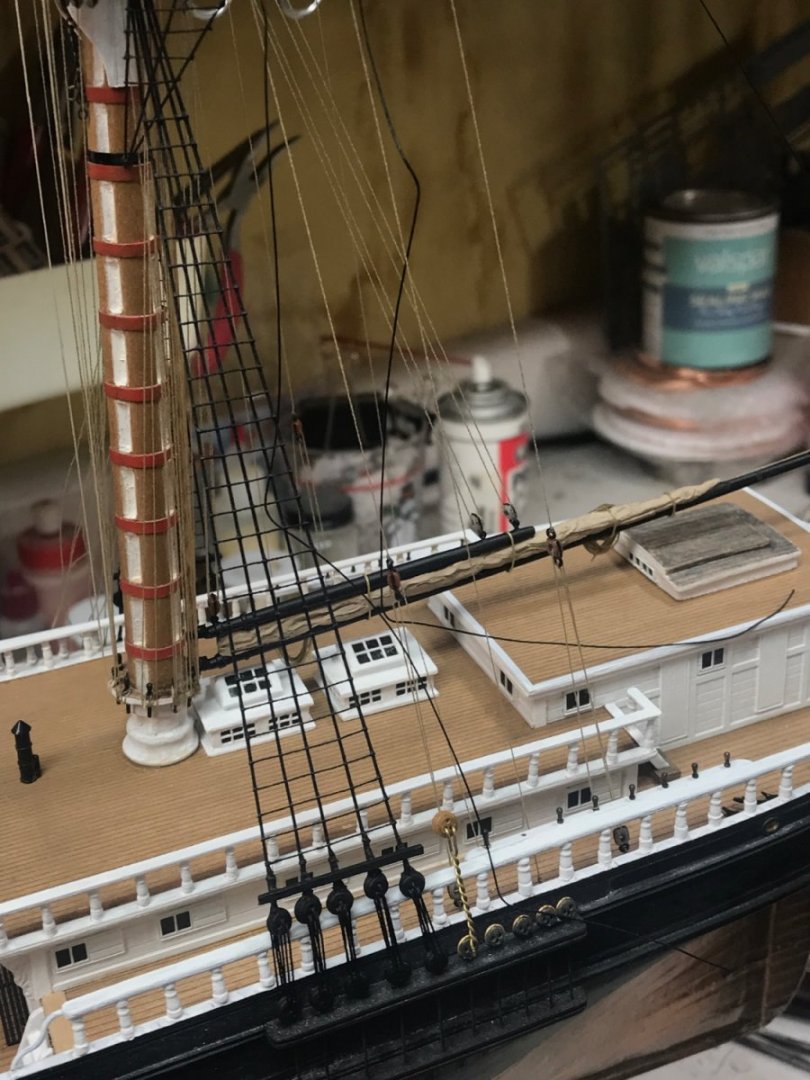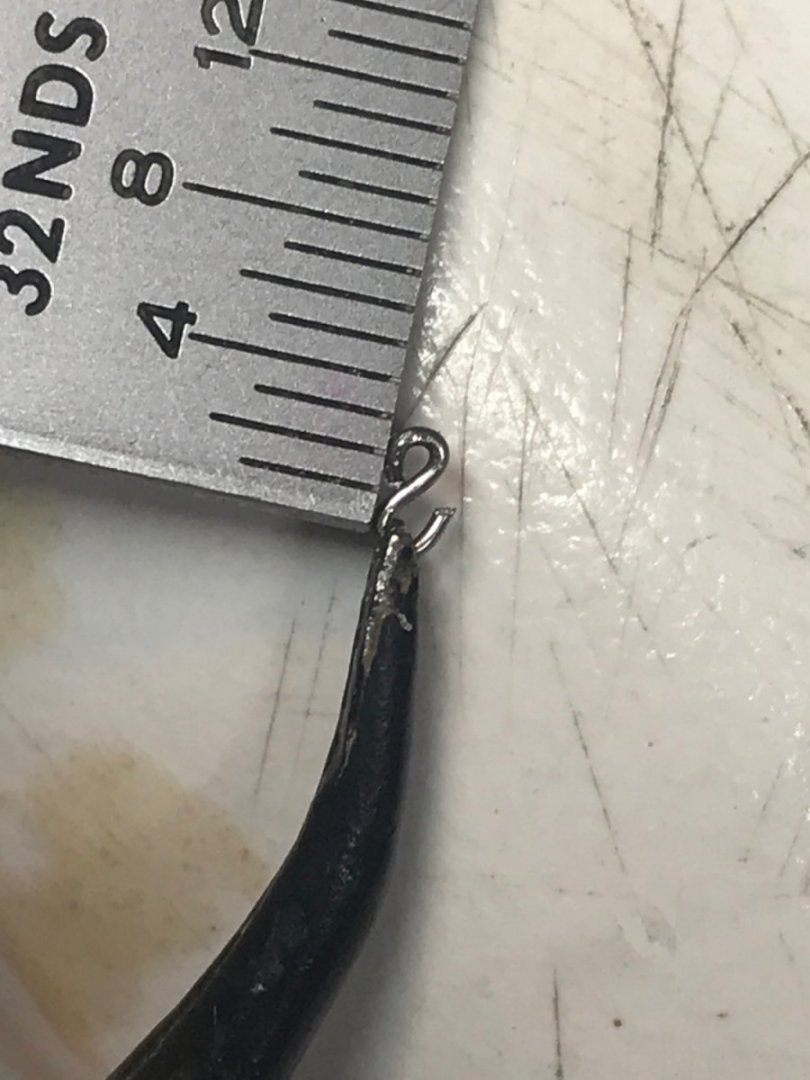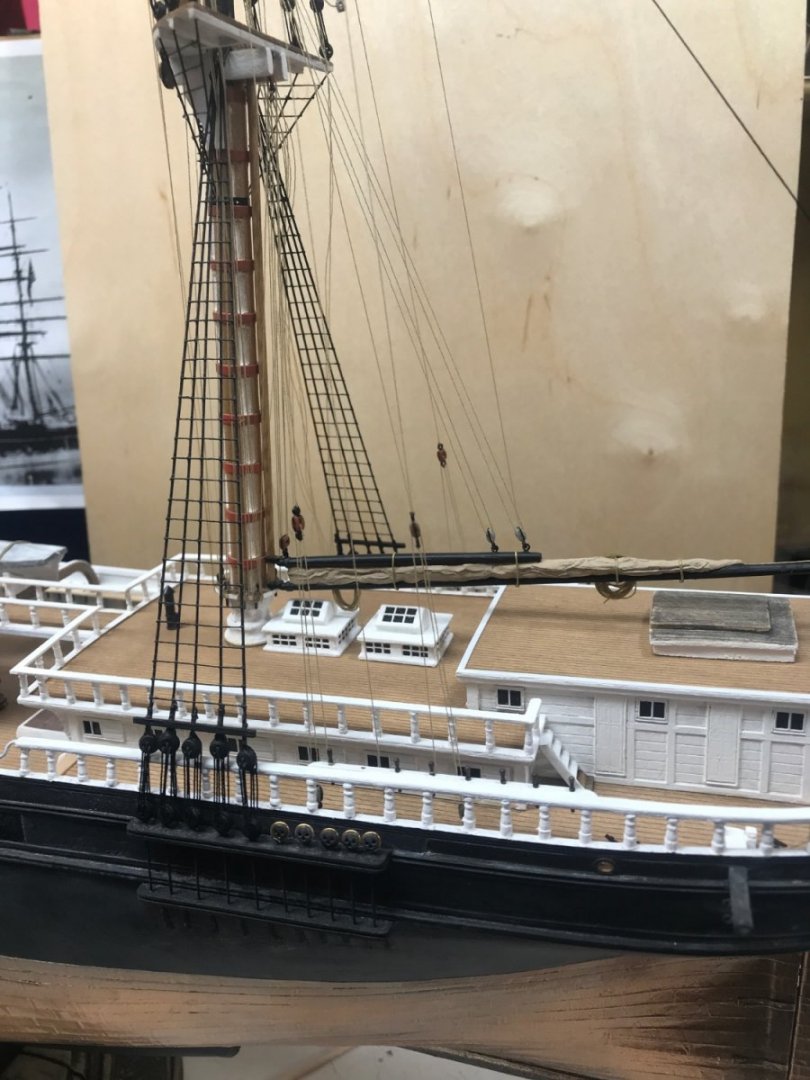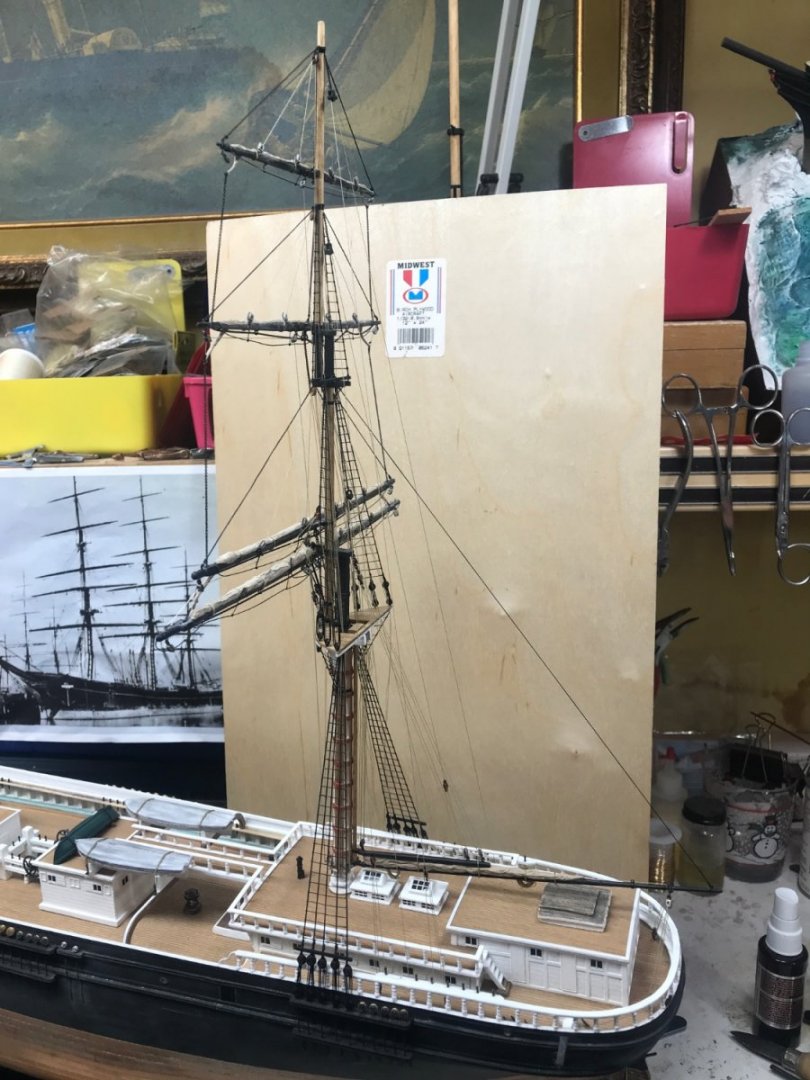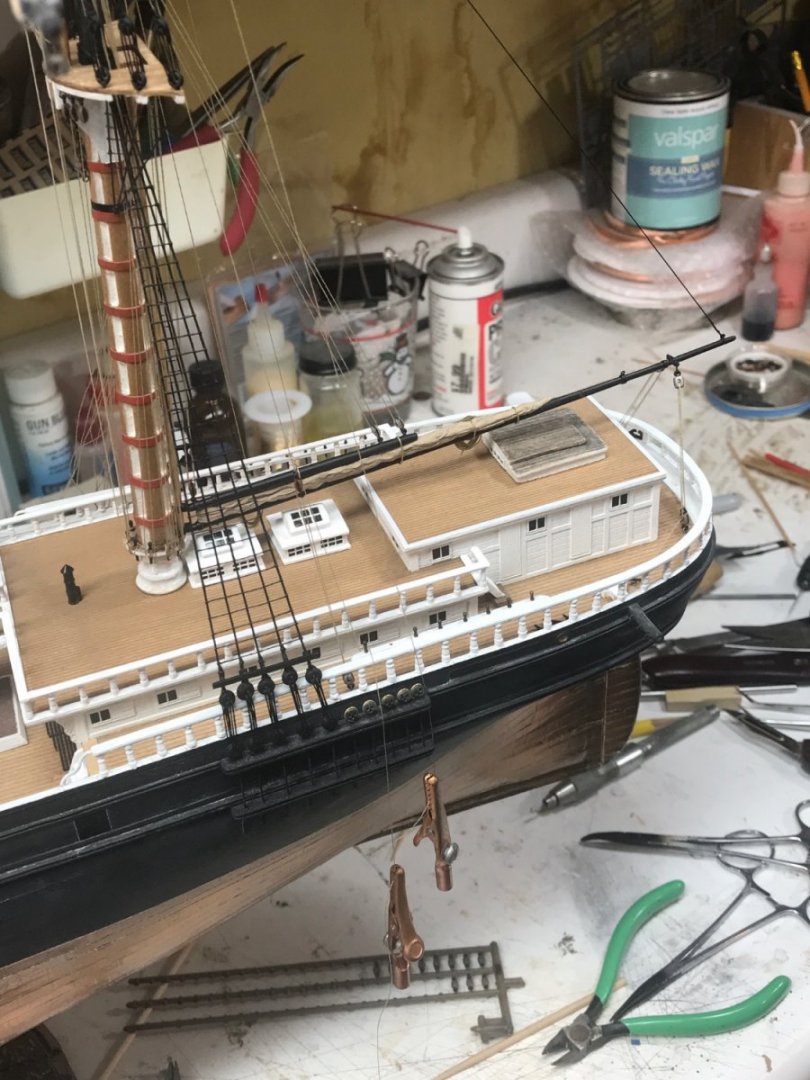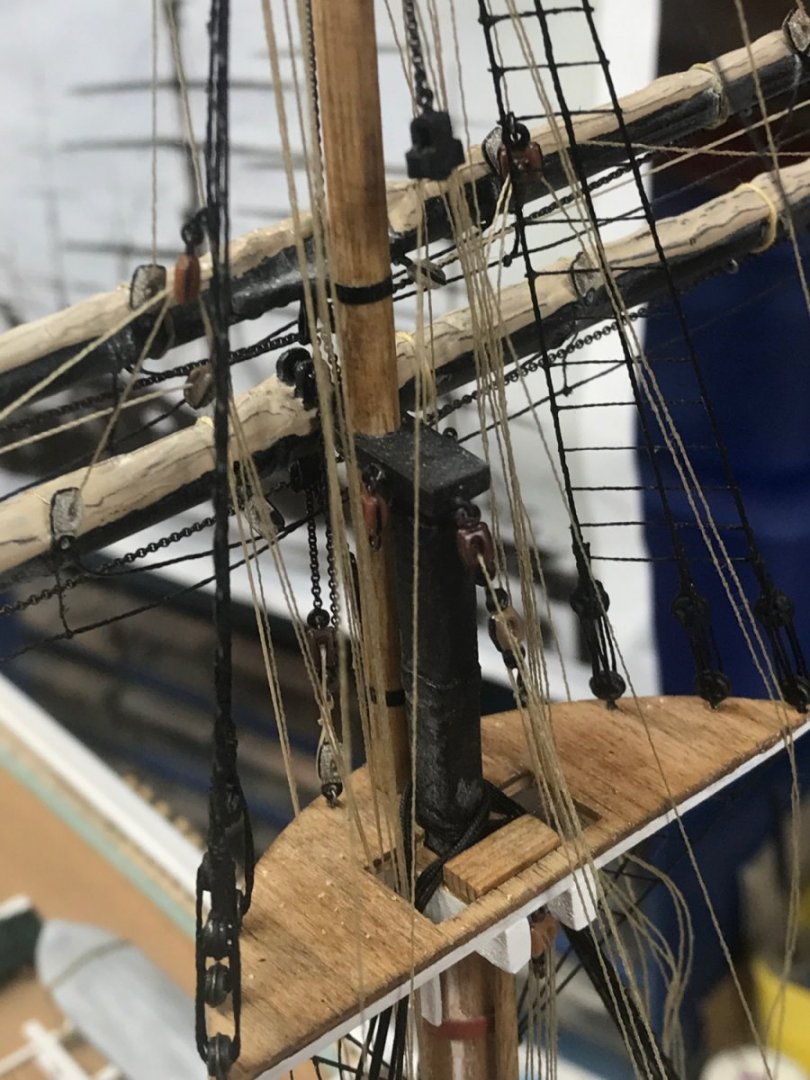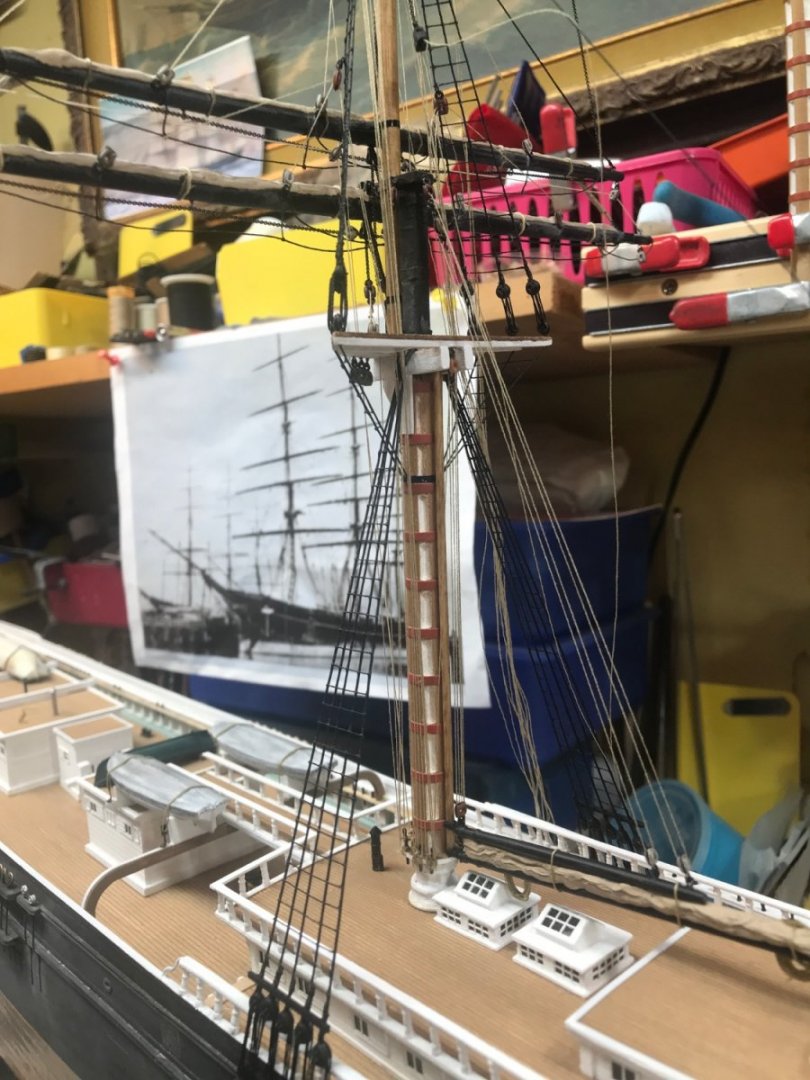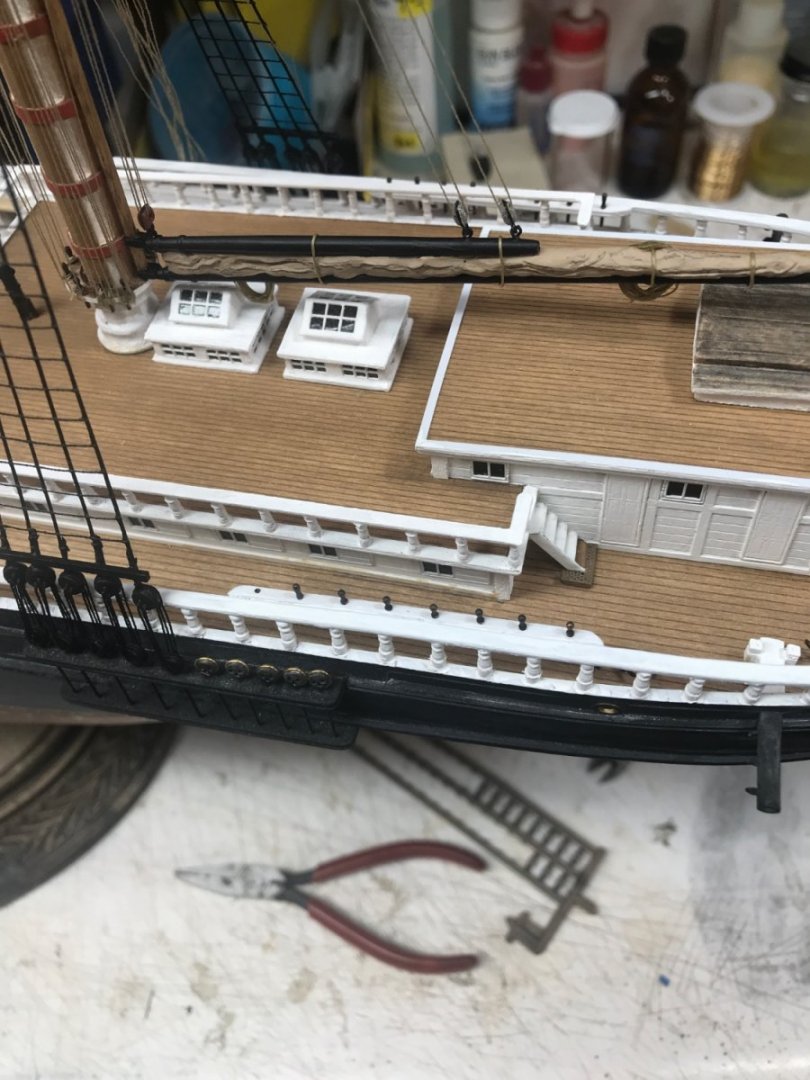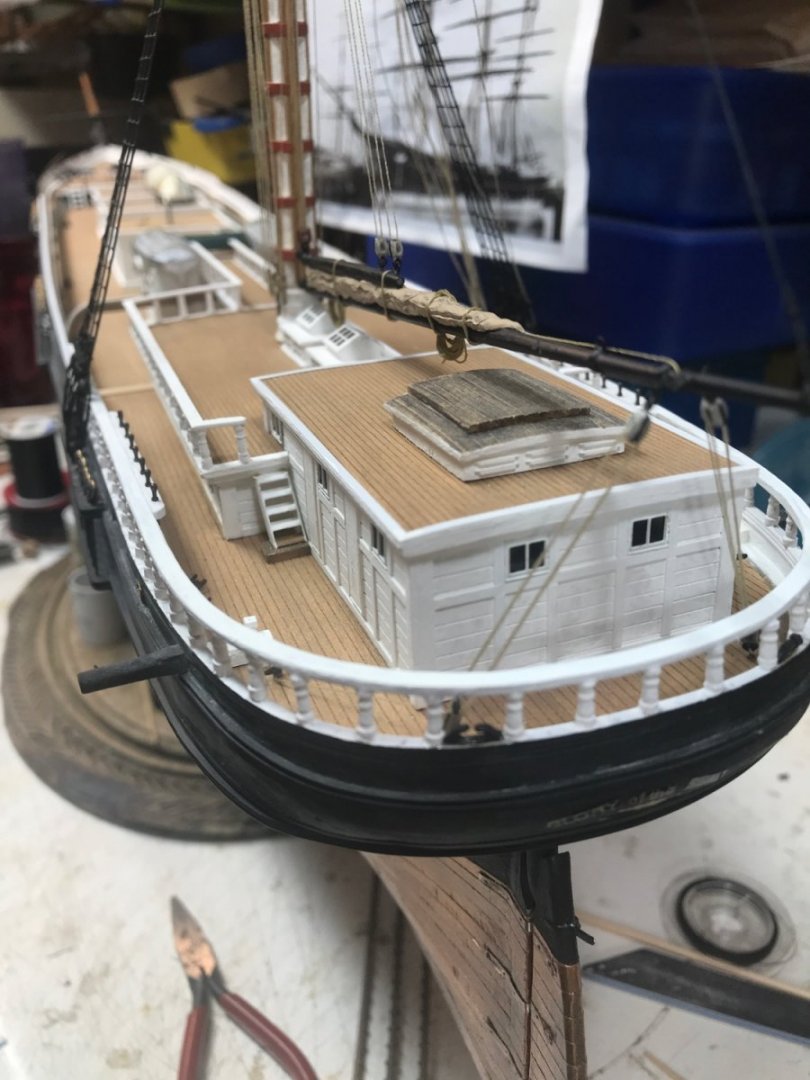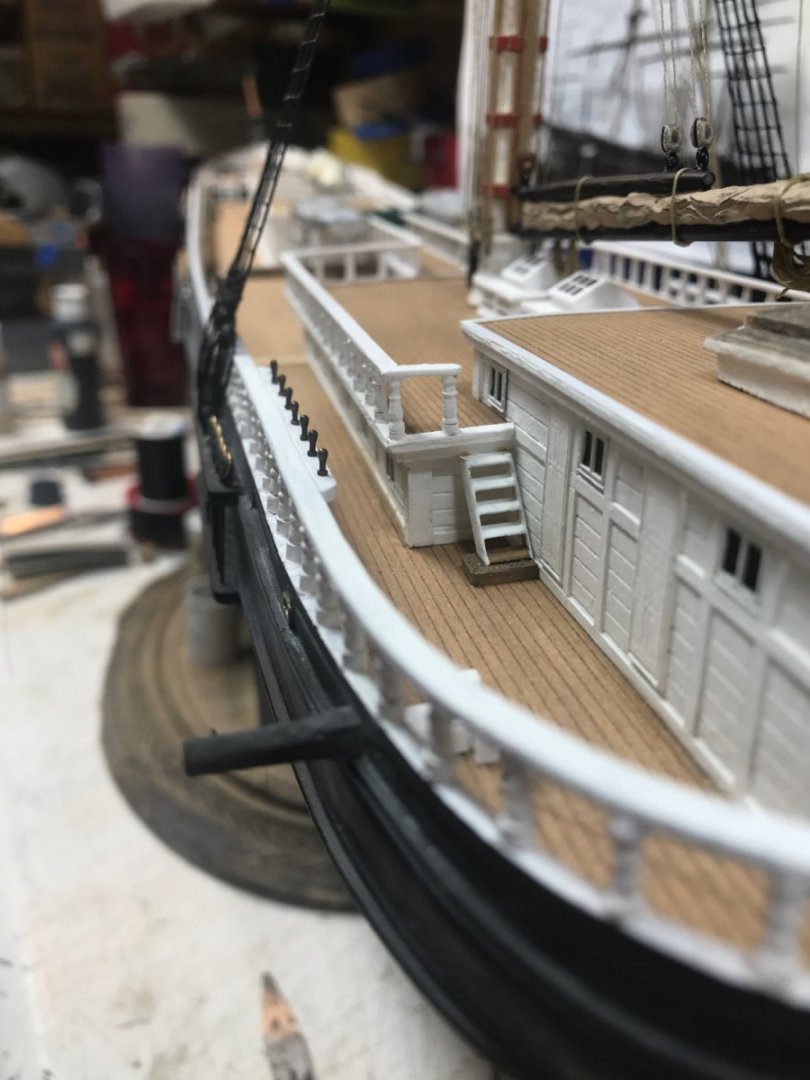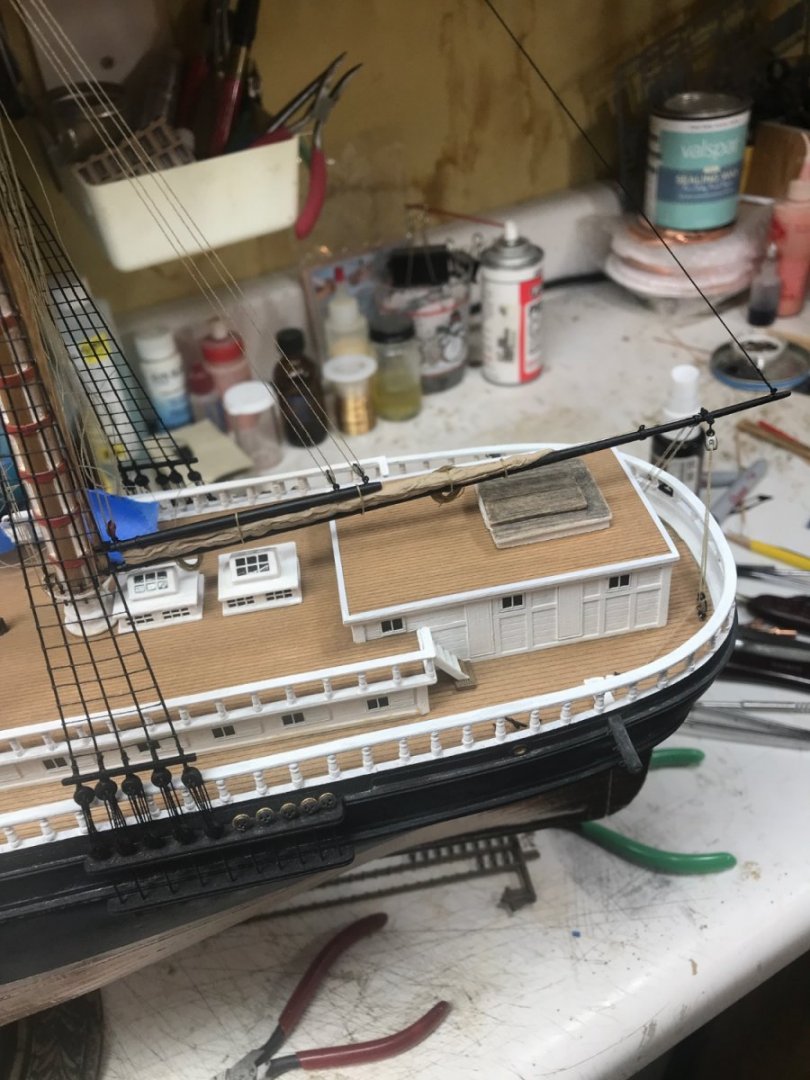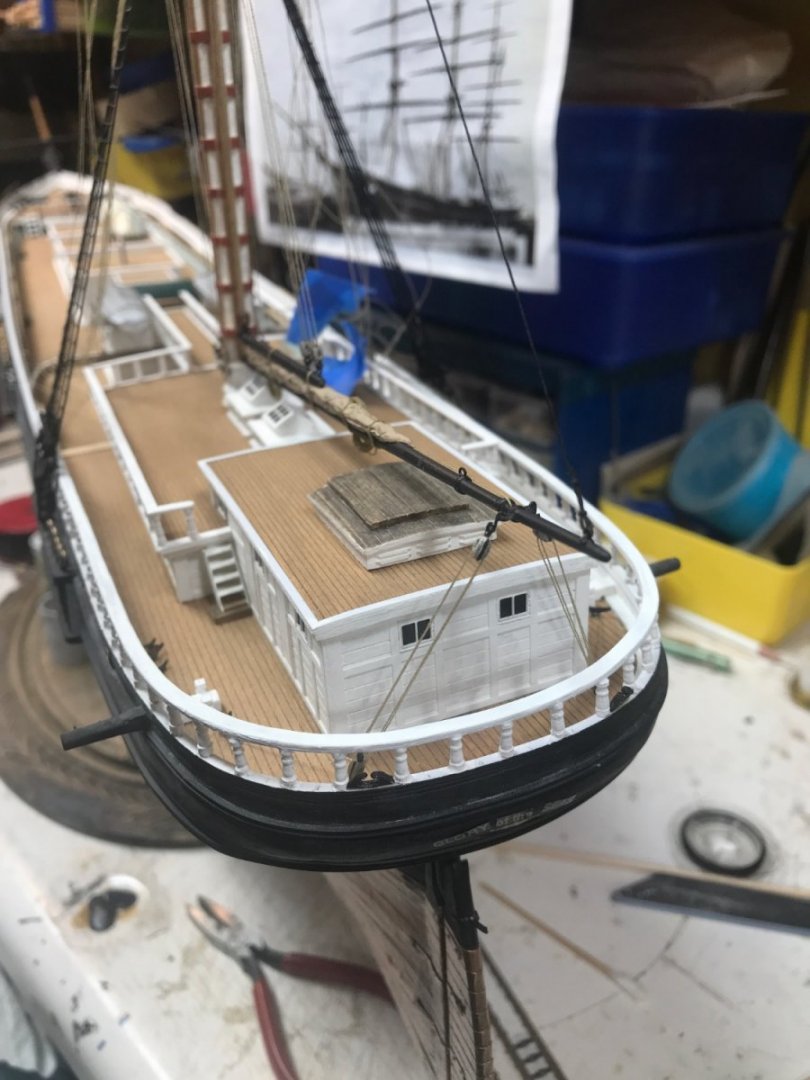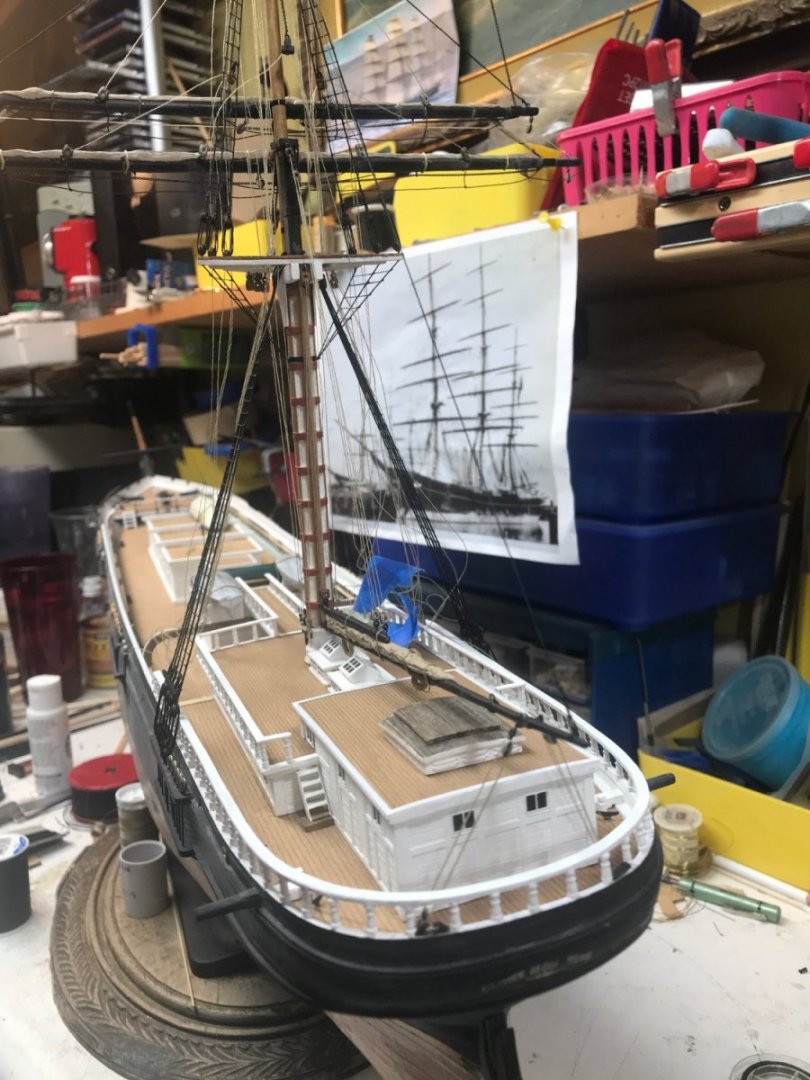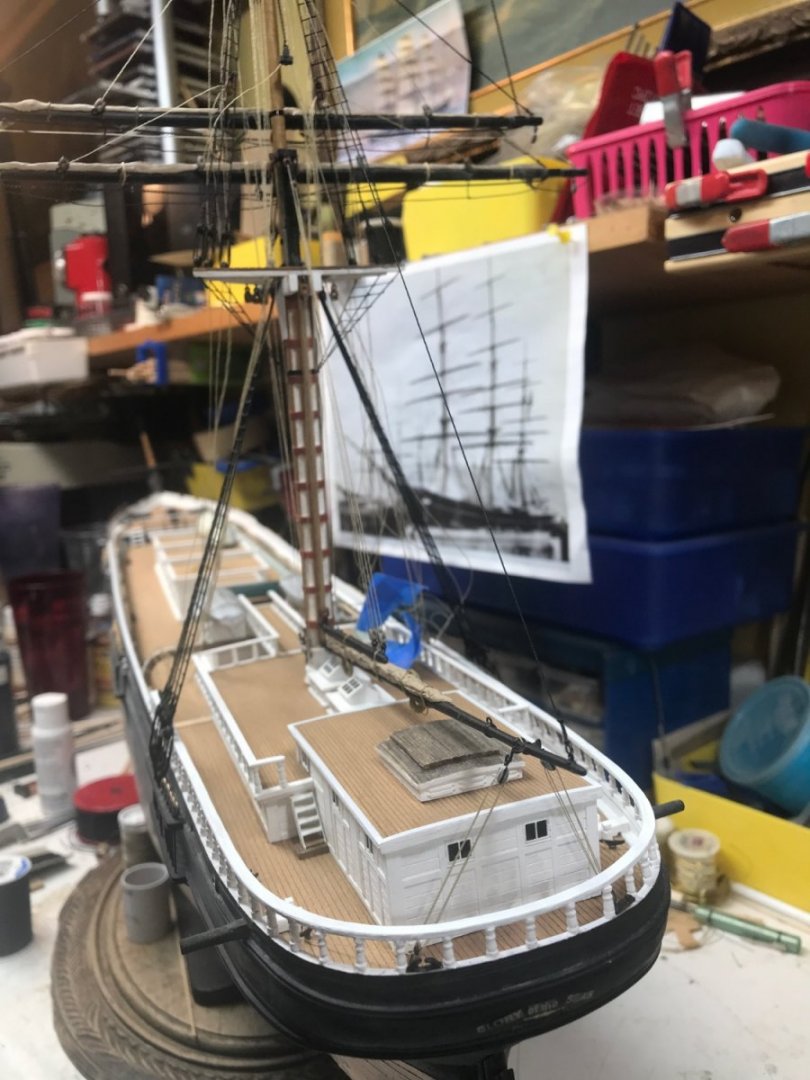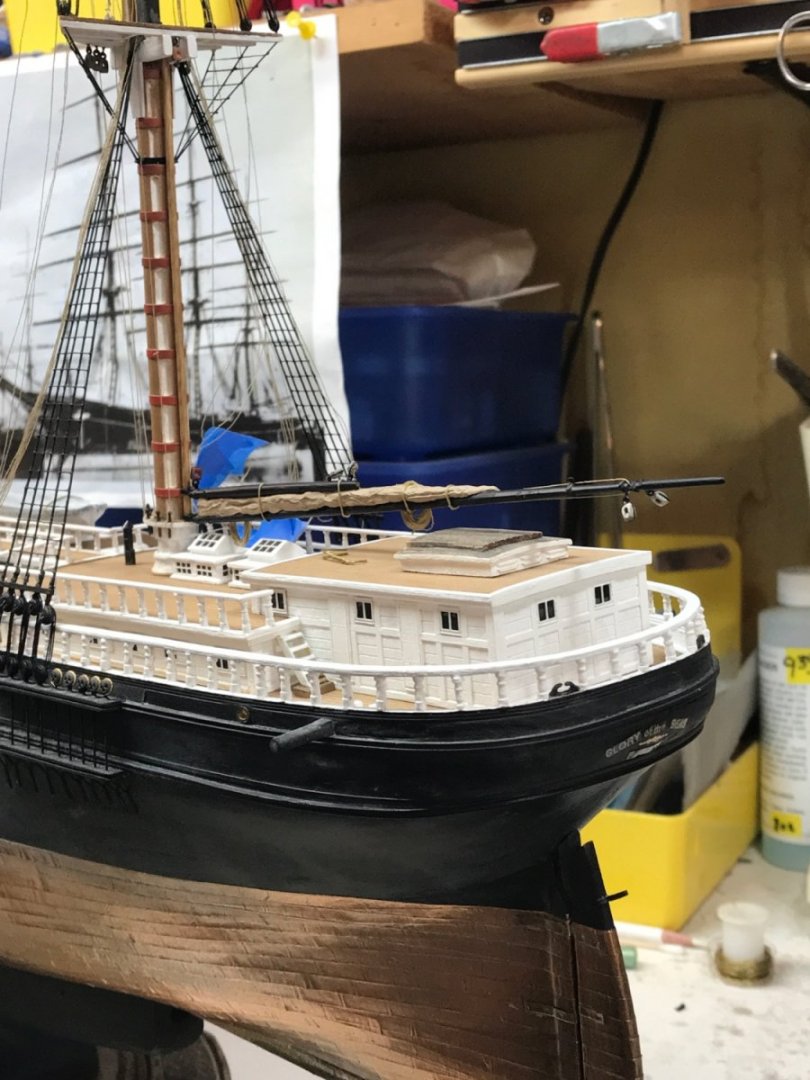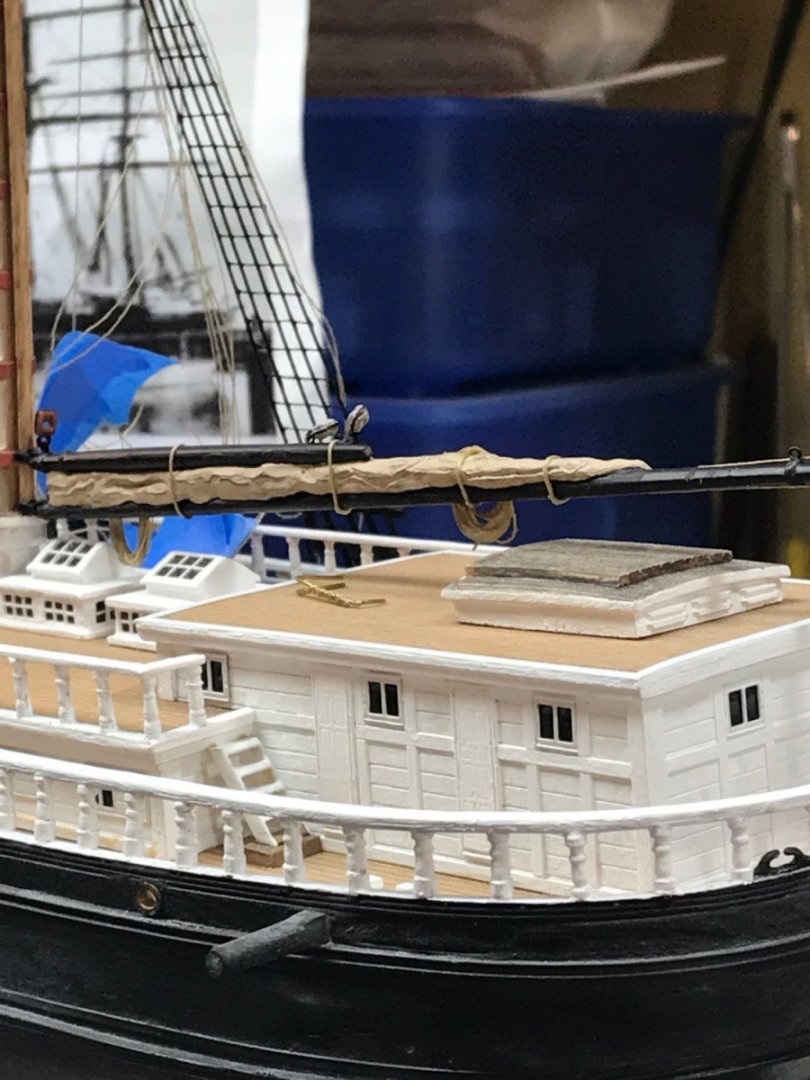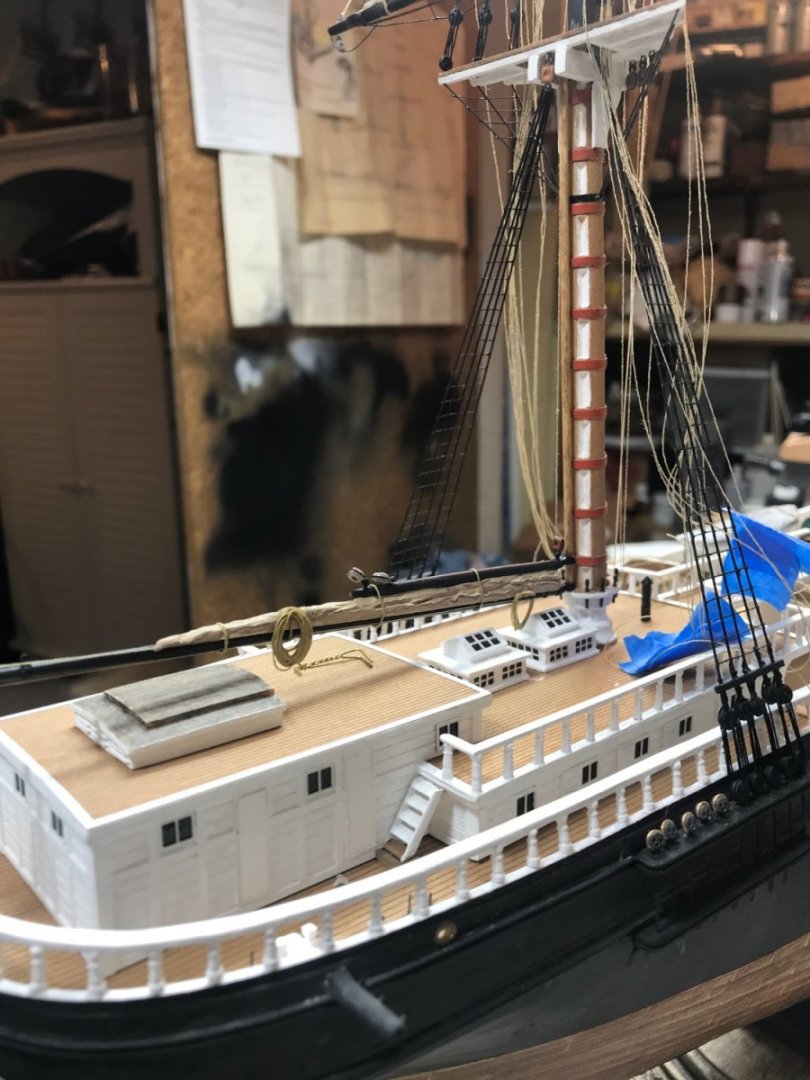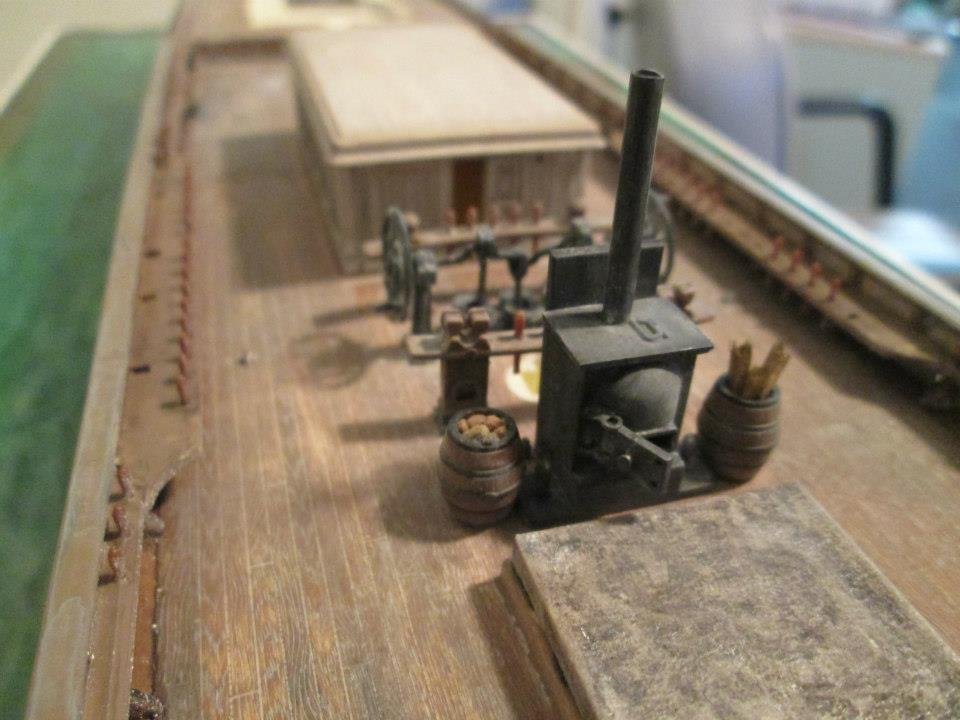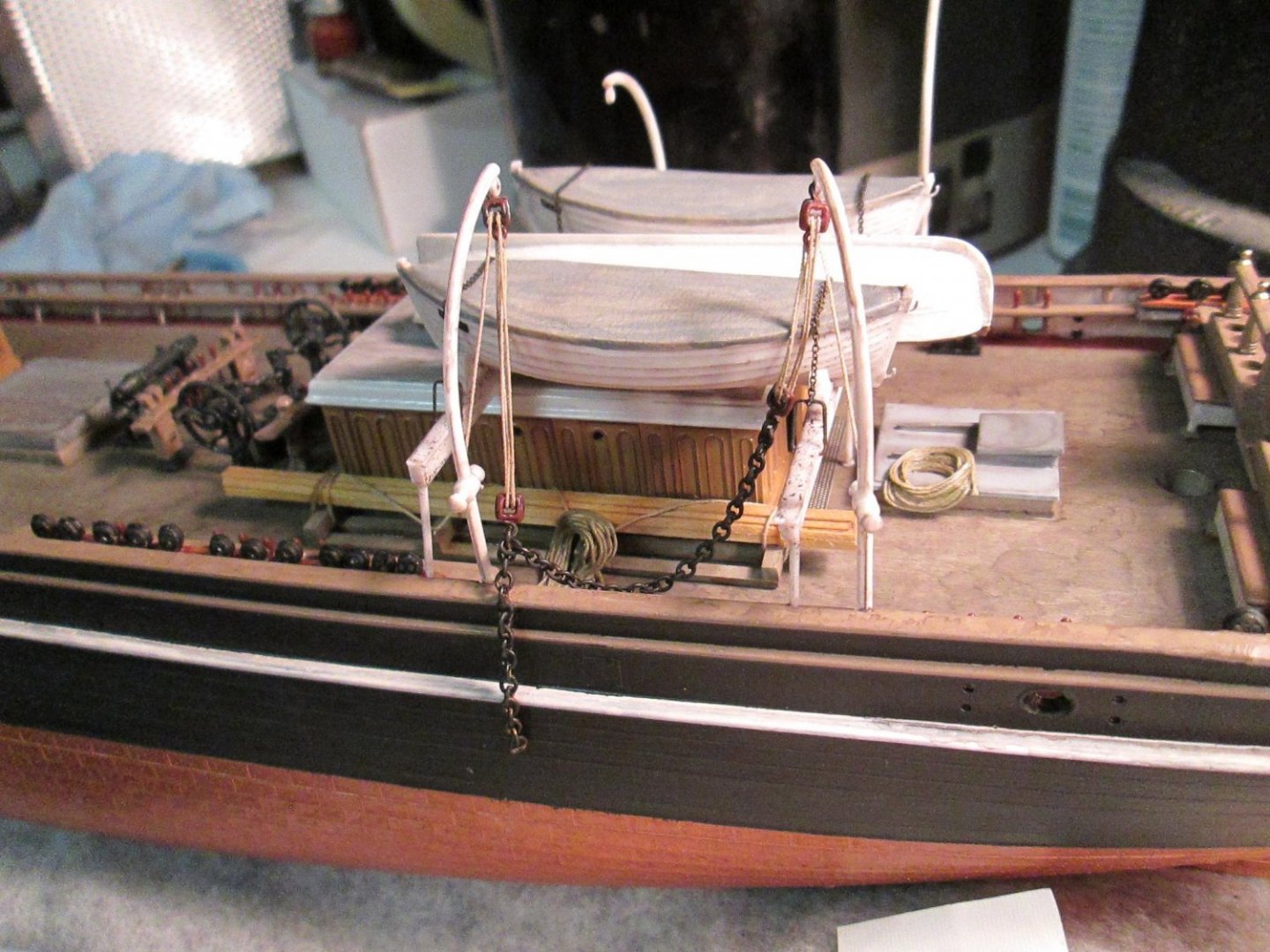-
Posts
5,513 -
Joined
-
Last visited
Content Type
Profiles
Forums
Gallery
Events
Everything posted by rwiederrich
-
- 3,560 replies
-
- clipper
- hull model
-
(and 2 more)
Tagged with:
-
- 3,560 replies
-
- clipper
- hull model
-
(and 2 more)
Tagged with:
-
- 3,560 replies
-
- clipper
- hull model
-
(and 2 more)
Tagged with:
-
- 3,560 replies
-
- clipper
- hull model
-
(and 2 more)
Tagged with:
-
Finished up the port mizzenmast backstays. I’ll add a couple more details on this side before flipper to the starboard side. Rob
- 3,560 replies
-
- clipper
- hull model
-
(and 2 more)
Tagged with:
-
Right. The creative process finds many avenues. I'll leave you to do what you do....and I'll keep my focus on what's in front of me. Thanks for all you do. Rob
- 3,560 replies
-
- clipper
- hull model
-
(and 2 more)
Tagged with:
-
Rich...I have full confidence in your preparedness.....I'm simply saying the completeness of the models lends the article to possibly having a part 2 at some later date..when the models are complete. Not that you you need to add to what you have already achieved....for this first article deadline. Rob(feeling the need to get more work done.....soon)
- 3,560 replies
-
- clipper
- hull model
-
(and 2 more)
Tagged with:
-
- 3,560 replies
-
- clipper
- hull model
-
(and 2 more)
Tagged with:
-
- 3,560 replies
-
- clipper
- hull model
-
(and 2 more)
Tagged with:
-
I mentioned earlier in my comment that a second or third installment might be nice to follow up with the builds. I hope to spend more then one day a week on her...hoping to expedite her finish date. A date established to cause me to a closer completion date make me get off my toosh. A *due-date* is motivating. Thanks again for your efforts in this matter. Rob
- 3,560 replies
-
- clipper
- hull model
-
(and 2 more)
Tagged with:
-

Collections of Ship Models: Help!
rwiederrich replied to Sam Willis's topic in Nautical/Naval History
Thanks for the intro and reviews Sam.....I hope you find the material you are looking for...your project sounds amazing. Rob -
Rich...sounds like you are preparing a very detailed account of our research and the results...within our builds. Wonderful. I'd like to know about Ron Haug's corrections and Mike's critique if at all possible. I hope to have more completed by your July 1st deadline....possibly I could take a much better...*As-is* image for you at or close to that time frame for your submission. Possibly there could be a follow up after She is completed. Great job....I hope the publisher accepts your article. It will be wonderful to see and read. Keeping Glory's history and legacy alive. Rob
- 3,560 replies
-
- clipper
- hull model
-
(and 2 more)
Tagged with:
-
Thanks everyone, I appreciate it immensely. All I can do is my best and what I think will look best during this period in her life. I plan on adding the monkey boom (pennant boom) next after I finish up with the yard halliard’s and their purchases. I’ll probably move to add the port back stays as well before I flip her and then finish all these elements on her starboard side. Then and only then will I proceed to finish up her main mizzenmast yard. So much to do still. Rich, that last image you posted clearly shows the location of the forward davit…..just aft of the main channel Rob
- 3,560 replies
-
- clipper
- hull model
-
(and 2 more)
Tagged with:
-
Druxey…….my last two builds, I did the same as you. I wanted to build in small steps, to fool myself that I am working faster by finishing smaller projects. Small projects finished gives me motivation in the short term. Verses the long term exhausting idea that I still have so much to go. Rob
- 3,560 replies
-
- clipper
- hull model
-
(and 2 more)
Tagged with:
-
- 3,560 replies
-
- clipper
- hull model
-
(and 2 more)
Tagged with:
-
Getting all the bunt lines belayed. Now that the minor rails are in ,I will have ample belay room for the yard halliard’s. Rob
- 3,560 replies
-
- clipper
- hull model
-
(and 2 more)
Tagged with:
-
After much though and tripping over myself…..I chose to add small pinrails to the rail. After rigging the sail control lines I needed more belay points and after reviewing images again……I opted for this route. It’s a minor deviation. Rob
- 3,560 replies
-
- clipper
- hull model
-
(and 2 more)
Tagged with:
-
Finished up the topping lift and boom guys. Now I’m going to untangle all the bunt and halliard’s lines and belay them to their control points. Rob
- 3,560 replies
-
- clipper
- hull model
-
(and 2 more)
Tagged with:
-
- 3,560 replies
-
- clipper
- hull model
-
(and 2 more)
Tagged with:
-
- 481 replies
-
- Cutty Sark
- Revell
-
(and 2 more)
Tagged with:
-
Decks can be tricky for sure. Especially since they *grey* with age. Dependent on the vessel, you were dealing with yellow fir, pine, and even teak on some vessels. My own Cutty's I greyed the deck on my award winning 1/96 Cutty....and on my award winning Ferreira...aka Cutty Sark. Rob
- 481 replies
-
- Cutty Sark
- Revell
-
(and 2 more)
Tagged with:
-
That is why the detail is so good Rob
- 345 replies
-
- Flying Fish
- Model Shipways
-
(and 1 more)
Tagged with:
About us
Modelshipworld - Advancing Ship Modeling through Research
SSL Secured
Your security is important for us so this Website is SSL-Secured
NRG Mailing Address
Nautical Research Guild
237 South Lincoln Street
Westmont IL, 60559-1917
Model Ship World ® and the MSW logo are Registered Trademarks, and belong to the Nautical Research Guild (United States Patent and Trademark Office: No. 6,929,264 & No. 6,929,274, registered Dec. 20, 2022)
Helpful Links
About the NRG
If you enjoy building ship models that are historically accurate as well as beautiful, then The Nautical Research Guild (NRG) is just right for you.
The Guild is a non-profit educational organization whose mission is to “Advance Ship Modeling Through Research”. We provide support to our members in their efforts to raise the quality of their model ships.
The Nautical Research Guild has published our world-renowned quarterly magazine, The Nautical Research Journal, since 1955. The pages of the Journal are full of articles by accomplished ship modelers who show you how they create those exquisite details on their models, and by maritime historians who show you the correct details to build. The Journal is available in both print and digital editions. Go to the NRG web site (www.thenrg.org) to download a complimentary digital copy of the Journal. The NRG also publishes plan sets, books and compilations of back issues of the Journal and the former Ships in Scale and Model Ship Builder magazines.


